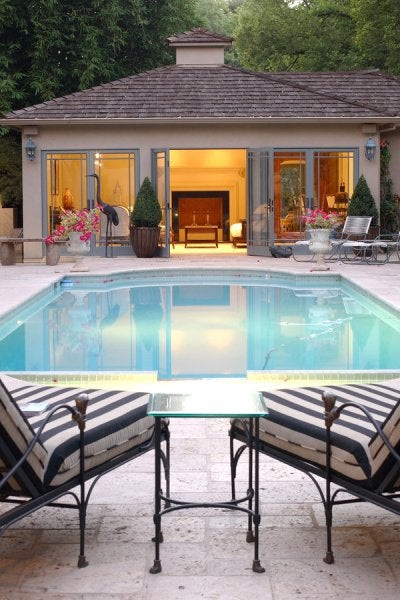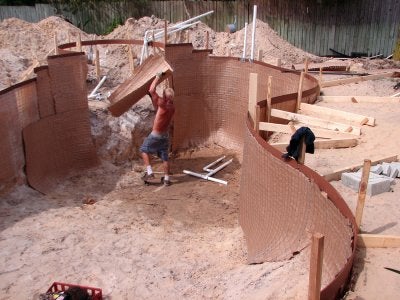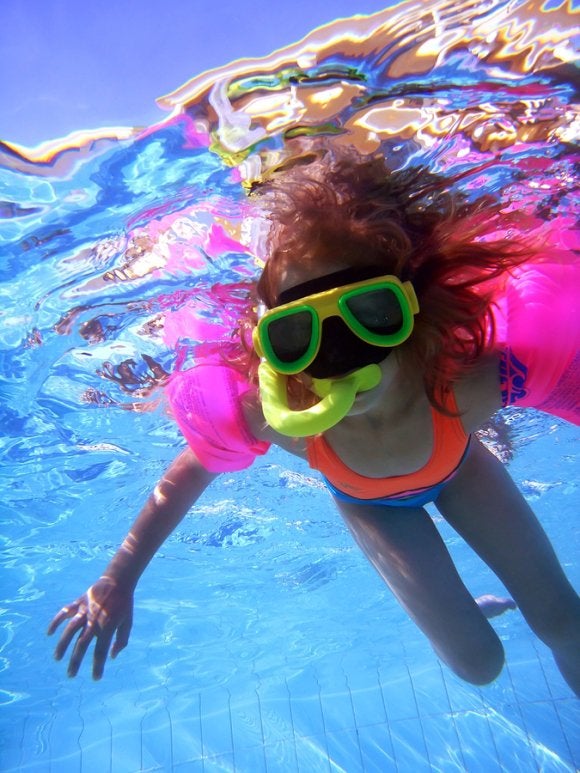-
Closing Your Inground Pool for Winter
There is more to the process of closing your inground pool than buying the right pool cover in Salt Lake City. Even for small pools, it helps to enlist the services of a professional swimming pool contractor for assistance. Check out this video clip for a look at the process of closing your inground pool for winter.
The first step in preparing to close up your swimming pool for the winter is to make sure it’s as clean as possible. This includes all of the typical pool maintenance tasks like skimming and vacuuming. Make sure your chemicals are balanced, and then have your pool contractor help you blow out the lines; professional assistance is especially helpful if you have a pool heater or a fountain feature. Finally, add your winter chemicals into your water and use a quality winter pool cover to close it up for the winter.
-
Answering Your Questions About Inground Pool Installation
When you buy a new house for yourself and your family, you might start thinking about swimming pool installation serving Salt Lake City. A new pool can bring all kinds of advantages to your backyard, and it can set the stage for an outdoor fireplace and kitchen as well. Before you can begin the swimming pool installation process, you’ll need to choose your favorite design. It also helps to understand how the actual installation process works, even though it’s best to have your professional swimming pool company complete the process. Continue on for answers to your questions about inground pool installation.

What kinds of designs can I choose from?
Planning always comes first, and such is the case when it comes to an inground pool installation. In order to choose the best design for your needs, it helps to consider certain factors. Look at the space you have in your yard, the budget you have to work with, and how you would like the pool installation to aesthetically improve your yard. Today’s pools come in all shapes and sizes, although some are more popular than others. You can choose a long, narrow pool that’s perfect for swimming laps, or an L-shaped pool with a distinct shallow end for the kids. You can even add fun pool features like fountains and lighting.
How does installation work?
While the specific swimming pool installation process depends on the design you choose, most of the steps tend to fall in the same order. You will always need to excavate before an inground pool installation so that the wall panels can be placed. After spraying or pouring the basin, an area will be designated for your pool deck. Finally, the liner and decking will be constructed.
Can I do it myself?
An inground pool installation seems like a relatively straightforward procedure, but there is a tremendous amount of effort and precision involved. For these reasons you should always work with a professional pool contractor when seeking a new installation. This will leave you with professional results and a safe, secure, and aesthetically pleasing new pool.
-
Pool Installation Step-by-Step
If you’re looking for more ways to have fun and cool off this summer, consider pool installation near Salt Lake City. Backyard pools can add beauty to your yard while providing fun, relaxation, and relief from the summer’s heat. Here is a step-by-step look at the swimming pool installation process:

Design
The pool installation process usually takes about 4 to 6 weeks to complete. While the exact steps may vary between individual pools or pool contractors, there are several important steps for every pool building process. Before the installation can begin, you will first work with your pool contractor to determine the pool’s location, size, and shape. You’ll also decide on most of the details at this time, such as pool tile, surface texture, deck material, and if you would like a pool heater.
Excavation
Once you have a plan ready, excavation can begin. Your contractor will first measure and mark the shape of the pool. Next, the vegetation and landscaping in the area will be removed. Once the ground is ready, a hole will be dug to hold the pool and its plumbing.
Bracing & Plumbing
After the excavation is complete, panels and braces will be placed to create a framework for the walls of the pool. At this point, you will see your pool begin to take shape. Next, all of your pool’s plumbing and electrical wiring will be installed. In many cases, these steps will be completed by plumbing and electrical professionals.
Pouring
With all of the pipes and wiring in place, the concrete will be poured to form the shell of your pool. After this step, dirt is moved back around the pool to fill surrounding gaps, cover the plumbing, and create a surface for your deck. Once the backfilling is complete, the deck will be built, and a liner will be added to the pool. At this point, you will only need to replace the landscaping before you can enjoy your new backyard pool.
-
Basic Pool Safety Tips

If you’re considering a new swimming pool and hot tub installation in Salt Lake City , you and your family should become familiar with basic pool safety tips. This is particularly important for those who don’t have a lot of experience with in-ground pools or indoor swimming pools. If you have young children or if members of your family aren’t strong swimmers, you should sit down and discuss pool safety before beginning your swimming pool installation.If you have young children, your pool and hot tub should be surrounded with a high fence that is locked whenever the pool is not in use. You should also consider installing a swimming pool and hot tub cover to prevent accidents. Children should not use the pool or hot tub without careful adult supervision. Your family should refrain from running, fighting, or roughhousing in or around the pool.
You should also be familiar with what to do in the event an accident does occur. No one should use the pool unless it is in the presence of someone who knows CPR and who is strong and capable enough to pull an injured or unconscious person out of the swimming pool.
-
Getting Your Pool Ready for Swimming Season
Now that summer is here, it’s time to take advantage of the warm weather by using your pool as often as possible. Prior to swimming, it’s important to make sure that your pool is up to standard to ensure the health and safety of you and your guests. Continue reading to learn some key tips for swimming pool maintenance in Salt Lake City.
Before Swimming
Remove your pool cover, spa cover, or hot tub cover. Clean the cover and store it in an area where it won’t be subject to damage from bugs or animals. Clean and vacuum your swimming pool thoroughly, and clean and inspect the pool’s deck, tile, and grout. Test the water balance, pH level, calcium hardness, and total alkalinity levels. If you are unsure of how to test these levels yourself, bring a sample of your pool water to your local swimming pool services company for testing. Add algaecide to your pool if necessary. Check your swimming pool components to make sure that they are all undamaged and operating correctly, and lubricate the swimming pools fittings, valves, o-rings, and plugs.Weekly Pool Maintenance
Remove leaves and debris from the swimming pool. Test and adjust the levels of chlorine and sanitizer in the pool as necessary. Chlorine levels should be between 1-3 ppm, and bromine levels should be between 3-5 ppm. Ensure that the swimming pool’s water level is high enough. Text the pH balance of the pool; the level should be between 7.4 and 7.7 if the pool has a vinyl or tile finish. If the pool has a fiberglass finish, the range should be between 7.3-7.5. Do not correct the pH level of your pool more than once per week. Test and adjust the pool’s alkalinity, oxidizer, and stabilizer levels and adjust as necessary.Monthly Pool Maintenance
Test and adjust the pool’s calcium hardness and total dissolved solids levels. Test and adjust the total alkalinity level, which should be between 120-150 ppm. Chemically clean the pool’s filter, and clean and inspect the pool’s tile, grout, and sealant.
RECENT POSTS
categories
- Uncategorized
- Hot Tub Installation
- Swimming Pool Installations
- Swimming Pool Design
- In Ground Pools
- Swimming Pool Maintenance
- Swimming Pool Service
- Swimming Pool Repair
- Outdoor Fireplace
- Outdoor Fire Pit
- Pool Safety
- Deep Blue Pools and Spas
- Exercise
- Swimming
- Outdoor Kitchen
- Pool Chemicals
- Chlorine Levels
- Water Feature
- Burning Calories
- Pool Contractor
